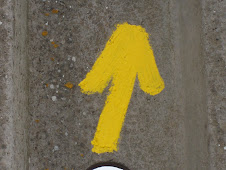Sunday, November 30, 2014
© * Estremoz, Cidade branca e amuralhada.
Monday, November 10, 2014
© * ETAPA 11 Caminho de Santiago do Este de Portugal/Oriental desde Tavira/Algarve - BORBA.
**BORBA on the 11th Stage of "O Caminho de Santiago do Este de Portugal/Oriental desde Tavira/Algarve", between
Alandroal and Estremoz over a distance of about 26,4 km, since XIV/1988/1996/2009/2017.**
-------------------------------------------------------------------------
**Borba is one of the great marble towns, it is also the place for buying antiques, there is a castle, the Fonte das Bicas, and a number of fine, ornately carved passos (portals) and in the middle of town is the extraordinary chequered facade of the chapel next to the Convento das Servas but it would be unusual for any of these sights to immediately spring to mind if you mentioned to word "Borba" to the Portuguese. To them the word triggers a vision of nothing but tanks, barrels and bottles of robust, strong, dark red wine which is the product of the vast buildings of the adegas in the heart of town. ------------------------------------------------------------------------
***BORBA***
A fama desta vila, vizinha de Estremoz, vem das pedreiras de mármore branco e das vinhas, umas e outras exploradas com
sucesso desde tempos imemoriais. O Chafariz das Três Bicas e a Igreja das Servas sao locais de referência.
------------------------------------------------------------------------
------------------------------------------------------------------------
***BORBA***
A fama desta vila, vizinha de Estremoz, vem das pedreiras de mármore branco e das vinhas, umas e outras exploradas com
sucesso desde tempos imemoriais. O Chafariz das Três Bicas e a Igreja das Servas sao locais de referência.
------------------------------------------------------------------------
 ------------------------------------------------------------------------
***BORBA***
A fama desta vila, vizinha de Estremoz, vem das pedreiras de mármore branco e das vinhas, umas e outras exploradas com
sucesso desde tempos imemoriais. O Chafariz das Três Bicas e a Igreja das Servas sao locais de referência.
------------------------------------------------------------------------
------------------------------------------------------------------------
***BORBA***
A fama desta vila, vizinha de Estremoz, vem das pedreiras de mármore branco e das vinhas, umas e outras exploradas com
sucesso desde tempos imemoriais. O Chafariz das Três Bicas e a Igreja das Servas sao locais de referência.
------------------------------------------------------------------------
© * Vila Vicosa
Vila Vicosa has many major sights but its main attraction is that it is the most beautiful of the marble towns to walk around. The buildings are elegant, the windows and doorways tastefully framed with weather-worn marble cantarias and at first-floor height there are often arched arcades and wrought iron balconies. The doors all have their odd knocker; some a simple hand holding a ball, others as intricate as a brace of duck dangling a tortoise. The name Val Vicosa - meaning verdant valley - was given to the town after the reconquest in 1270 under Afonso III. André de Resende, a 16th century Portuguese historian, referred to the town as Calipole (Greek for "good city") and the local people are still known as Calipolense.
Subscribe to:
Posts (Atom)






